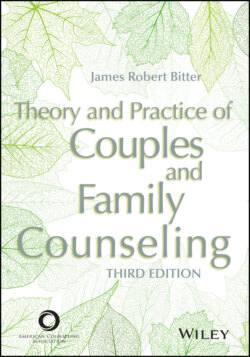Читать книгу Theory and Practice of Couples and Family Counseling - James Robert Bitter - Страница 50
Salvador Minuchin
ОглавлениеAs is true of many of the early pioneers, there is a charismatic quality to Salvador Minuchin that is enhanced by his preference for demonstrations of his approach with actual families. Born in Argentina to Russian Jewish immigrants, Minuchin became a medical doctor with the anticipation of working in pediatrics. He left Argentina for Israel when that state was established in 1948, volunteering as a medical doctor in the Israeli army. Following the war with the Arabs, he came to the United States, where he began training in psychoanalysis as well as child psychiatry with Nathan Ackerman. Minuchin would return to Israel in 1952, where he worked with displaced children for 2 years. “Minuchin’s interest in working with entire families can be traced to this point in his career” (Becvar & Becvar, 2013, p. 32).
Upon his return to the United States, Minuchin completed his training in psychoanalysis, and in 1960 he took a position at the Wiltwyck School for Boys in New York City. It was there that Minuchin and his associates, Braulio Montalvo, Bernard G. Guerney, Jr., Bernice L. Rosman, and Florence Schumer (S. Minuchin et al., 1967), began working with inner-city delinquent children, most of whom were Black or Puerto Rican and who came from low-income, often ghettoized families. It is in this work that Minuchin first introduced the concept of structure to family counseling and began to define the function of structure in family systems.
Minuchin noticed that in troubled families, parents were either overly involved (enmeshed) or detached (disengaged) or both. Both of these structures eroded the parents’ abilities to provide effective leadership in the family. Minuchin came to believe that families had subsystems, and each subsystem had tasks, processes, and interactions that were appropriate to that subsystem but that often got derailed when the boundaries between the subsystems became either diffuse or too rigid.
Based on his earlier work, Minuchin was asked to be the director of the Philadelphia Child Guidance Clinic in 1965. He brought a number of his associates with him, and in 1967, Jay Haley joined them. Focusing on changing dysfunctional structures, Minuchin (1974/2012) taught colleagues and students through demonstrations on how to join with families, adopting the families’ preferred mode of operation, before attempting to restructure the family by interrupting dysfunctional patterns. His model of joining, assessment, and enactment would become standard practice for family counselors in the 1970s.
Minuchin transformed the Philadelphia Child Guidance Clinic into a training center for family therapists. Among his many innovations, he also trained community members to be paraprofessional therapists. His emphasis on working with the poor brought other major figures in family counseling into his programs, including Harry Aponte, Jorge Colapinto, and Charles Fishman. In 1981, Minuchin moved back to New York City, where he would eventually establish what is now the Minuchin Center for the Family, a training center currently directed by Jorge Colapinto. In recent years, Minuchin has mellowed a bit, and he has begun to look at family practice as a journey to hope, healing, and transformation (see S. Minuchin et al., 2006, 2007; S. Minuchin & Nichols, 1993).
